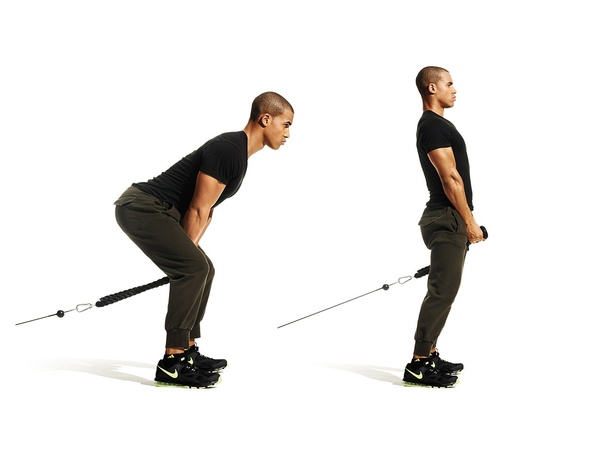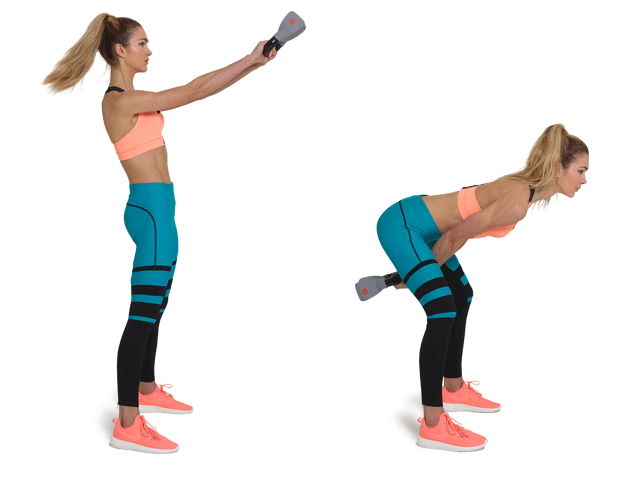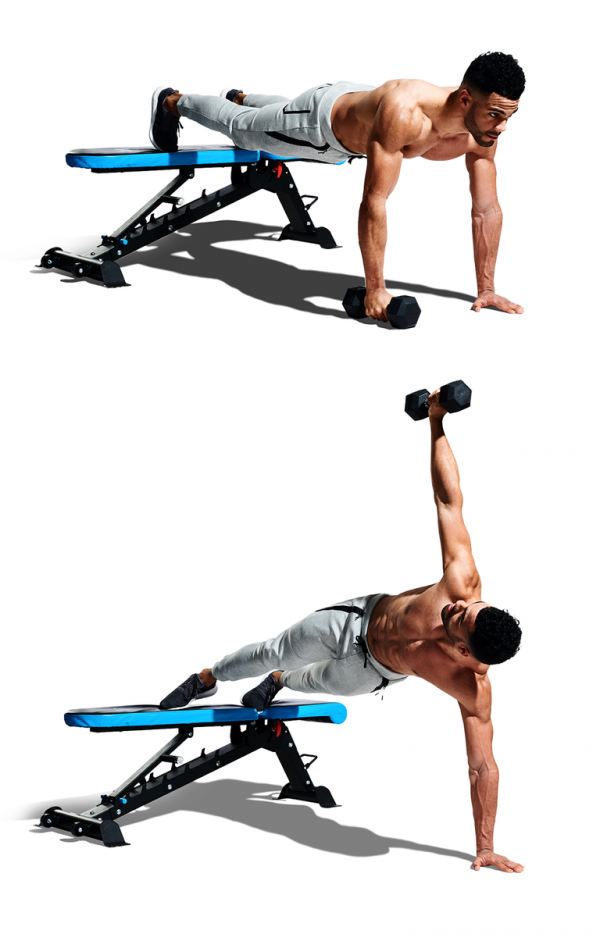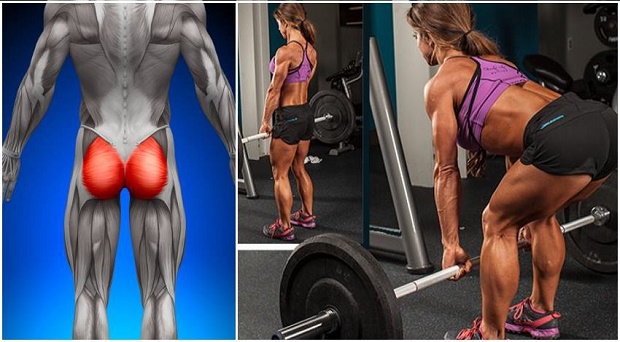Weak or dormant glutes can greatly impair the strength and mobility of your hips, take a toll on your overall athletic performance and increase your risk of injury. These are the most commonly experienced symptoms of dysfunctional glutes:
- Acute or chronic knee pain
- Weak ankles
- Flawed knee and hip mechanics
- Lack of soreness after a strenuous leg workout
- Tight or spastic hip flexors
All you need to perform this test is a chair. Stand in front of the chair with your feet under it and the knees touching the seat. Extend your arms in front of you and squat down, trying to avoid pushing into the chair with the knees.
If your knees hit or move the chair, it means that your glutes are not firing appropriately and you’re initiating the squat movement with your quads, which places unnecessary stress on the knees.
In addition, if your glutes are not functioning optimally, you won’t be able to perform these tests successfully:
- Romanian deadlifts at 75-80% of your max squat for several reps
- Barbell lunges with 50% of your 1RM squat or 100% of your bodyweight for several reps
- Holding a single-leg stand with your eyes closed for 60 seconds on each leg
- 12-15 consecutive kettlebell swings with 50% of your bodyweight
- 10 single-leg curls on each leg on a stability ball with elevated hips
If these tests revealed a major weakness in your glutes, it’s time to snap them back into perfect condition. Try the following 10 tips to optimise the function of your hips and glutes and improve both your athletic performance and physical health.
Emphasise the stretched and contracted positions
Increase the ability of your glutes and hamstrings to fully lengthen through a full range of motion. Hit your glutes with exercises that emphasise eccentric lengthening of the glutes and hamstrings, such as Romanian deadlifts, deadlifts and good-mornings.
To further enhance the benefits of these movements, perform them in an eccentric fashion, taking it slowly during the negative portion and pausing for 5 seconds in the stretched position.
The second part of the process of waking up your glutes includes movements that place focus on the contracted position, such as glute bridges, hip thrusts and reverse hyperextensions. These will help you isolate the glutes and strengthen the mind-muscle connection in the posterior chain.
Related article: How Much Can You Lift – How To Calculate Your One-Rep Max (1RM)?
Master the cable pull-through

The pull-through relies on horizontal forces that match the way your glutes actually function and work directly against the forces that want to flex your hips. Plus, this is one of the few movements that involve a great level of tension in both the stretched and contracted positions.
To increase the effectiveness of the cable pull-through, accentuate hip and gluteal activity even further by placing the cable pulley to approximately a foot above the ground. In addition, include an eccentric isometric at the bottom and an additional pause at the top.
Improve your posture
Proper spinal alignment will work wonders for your squats and deadlifts, as well as your ability to fully flex the hips in the stretched position. Postural alignment is the basis of proper movement and when it’s off, all movement patterns suffer.
Gluteal inhibition can negatively influence posture, and poor posture will further inhibit the glutes, which means that adequate spinal alignment is a crucial part of proper hip and gluteal function.
Related article: 5 Kettlebell Exercises To Strengthen Your Whole Body
Kettlebell swings

Kettlebell swings are ideal for strengthening the posterior chain because of the way their eccentric phase increases innervation of intrafusal muscle fibres.
Perform them with heavier loads for medium-to-high reps to build gluteal strength and explosive hip power and power them up by using a resistance band to increase force absorption and maintain constant tension throughout the movement.
Make sure you don’t jump into heavy swings too quickly and instead gradually increase the weight to activate the glutes and hams to greater degrees.
Avoid valgus collapse
The inward collapse of the knees, also referred to as valgus collapse and medial knee displacement, is a very common sight in the weight room. It’s characterised by hip adduction and hip internal rotation when the hips are in a flexed position.
When this happens, the glutes and hips lose a significant portion of their capability to contract. The best way to avoid it is by screwing your feet into the floor and pushing your knees slightly outward. Another great way to correct the valgus knee collapse is the plate squat.
To perform it, place your feet slightly wider than shoulder width, take a few 45-pound plates stacked on top of each other, place them between your spread legs and squat.
Related article: The Truth About Planks – Do They Really Work?
Windmill planks

The windmill plank requires a great coordination and force transmittal between the upper torso, core and hip muscles, making them work together to perform this high-tension movement.
In fact, this is one of the most effective core stabilisation exercises that requires intense activation of hip muscles that are difficult to target with many other exercises.
Start with both feet stacked, and as your form progresses try lifting the top leg while keeping both feet parallel to each other
Single-leg hinges

All eccentric single-leg hinges work great for strengthening your glutes as well as working the smaller butt muscles. For example, single-leg Romanian deadlifts are perfect for building immense gluteal power and stability.
This movement will actually strengthen your whole posterior chain by making the gluteus muscles, hamstrings and adductor magnus work together synergistic-ally to extend the hips, while the lower back extensors take the role of stabilisers.
In addition, the single-leg Romanian deadlift will help you develop dynamic flexibility in the hamstring muscles, which will consequently improve gluteal function.
Related article: Build Monster Legs & Glutes With This Workout!
Correct strength imbalances
More often than not, lifters have one glute that’s superior in strength and function compared to the other and this imbalance can be visible in many lower-body exercises. To fix it, you need to isolate and target the weaker glute by performing unilateral exercises such as single-leg hinges and single-leg hip thrusts.
In addition, you should intentionally focus on placing equal stress on each side during bilateral movements, since one side will always have a natural tendency to dominate the movement.

